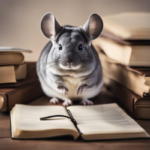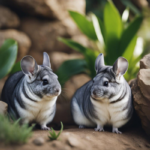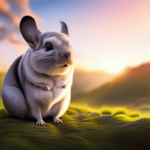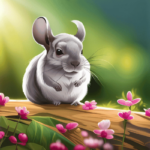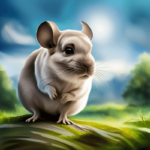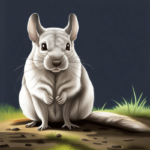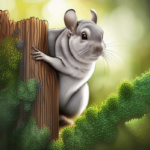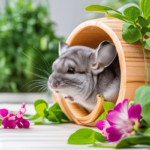Imagine a creature so soft it feels like a cloud, with eyes like glistening onyx and a playful spirit to match. Meet the chinchilla, a captivating rodent with a rich history woven into the fabric of the Andes. Their journey, spanning millions of years, is a testament to resilience, adaptation, and the enduring connection between humans and animals.
Chinchilla History and Evolution

Fossil evidence suggests chinchillas emerged around 35 million years ago, evolving from rodent ancestors in the Andes Mountains. These ancient creatures faced a harsh environment, marked by high altitudes, extreme temperatures, and sparse vegetation. To survive, they developed a unique set of adaptations.
Dense fur: Renowned for its luxuriousness, chinchilla fur boasts an incredible density of up to 80 hairs per follicle, compared to a mere 20 in humans. This plush coat acts as an insulator, protecting it from the biting Andean chill.
Powerful hind legs: Built for agility and speed, chinchillas’ strong hind legs propel them across rocky terrain and enable them to leap impressive distances.
Keen senses: Their large ears and exceptional eyesight keep them alert to predators, while their sensitive whiskers navigate them through the darkness of burrows.
Life in the Andes

For millennia, chinchillas thrived in the rugged Andean highlands, inhabiting rocky outcrops and building intricate burrow systems. They played a vital role in the ecosystem, dispersing seeds and contributing to nutrient cycling. Their soft fur also became prized by indigenous communities, who used it to create warm and luxurious garments.
Encountering the Spanish
The arrival of the Spanish in the 16th century marked a turning point in Chinchilla history. Their exquisite fur became a coveted commodity, fueling a relentless hunt that pushed the species toward the brink of extinction. By the 20th century, wild chinchilla populations had dwindled to a fraction of their former numbers.
Domestication and Conservation

Recognizing the plight of these fascinating creatures, dedicated individuals undertook the arduous task of domesticating chinchillas. Selective breeding programs led to the development of several fur-producing varieties, while others focused on preserving their wild counterparts. Today, chinchillas are primarily found in captivity, with passionate breeders and conservationists working to secure their future.
Challenges and Opportunities
Despite the successes in domestication and conservation, chinchillas still face challenges. Habitat loss due to mining and agricultural expansion threatens their wild populations. Additionally, the fur trade, though significantly reduced, continues to pose a risk.
However, hope remains. Growing awareness and appreciation for chinchillas have led to increased conservation efforts. Initiatives like habitat restoration programs and educational campaigns are crucial in ensuring their long-term survival.
Living with Chinchillas
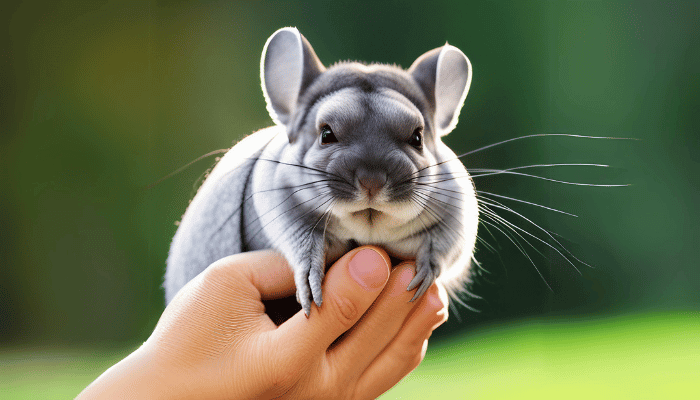
For many, owning a chinchilla is a dream come true. These playful and intelligent companions bring joy and laughter into countless homes. However, caring for chinchillas requires dedication and knowledge. Their specific needs, including temperature control, dust baths, and a spacious enclosure, must be met meticulously.
Beyond the Fur
Beyond their captivating looks, chinchillas offer valuable insights into the natural world. Their unique adaptations inspire biomimetic engineers, and their social behavior sheds light on rodent communication and cooperation.
The Future of Chinchillas
As we continue to unravel the Chinchilla’s History and Evolution: Unraveling the Past, we must recognize their intrinsic value and strive to secure their future. By safeguarding their wild populations and promoting responsible ownership, we can ensure these furry ambassadors of the Andes continue to enchant future generations.
Conclusion
The Chinchilla History and Evolution: Unraveling the Past is a captivating tale of resilience, adaptation, and the enduring bond between humans and nature. By understanding their past and recognizing their present challenges, we can ensure these remarkable creatures continue to thrive for generations to come. Let us remember, that their future lies not only in the hands of
FAQs
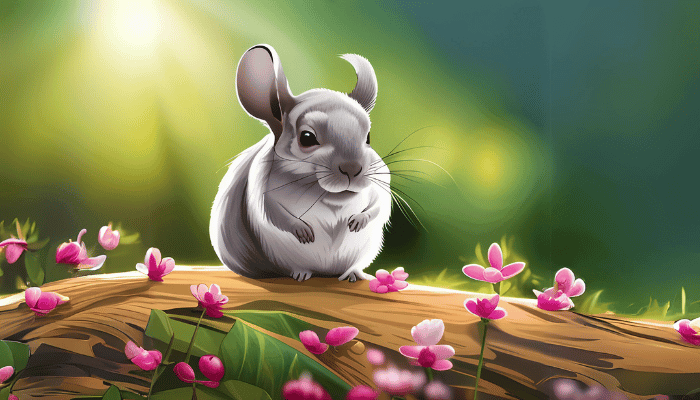
Where do Chinchillas come from originally?
Chinchillas hail from the Andes Mountains in South America, where they adapted to high-altitude environments over thousands of years.
Were Chinchillas kept as pets in ancient civilizations?
Yes, Chinchillas were kept as pets in ancient civilizations, particularly by royalty and elite classes. Their luxurious fur and charming demeanor made them prized companions.
How did the Chinchilla fur trade impact their population?
The Chinchilla fur trade led to a drastic decline in their population due to overhunting. Many Chinchilla species faced the threat of extinction during this dark chapter in history.
What adaptations help Chinchillas survive in the Andean highlands?
Chinchillas have evolved dense fur for insulation, large ears for temperature regulation, and strong hind limbs for agile movement, enabling them to thrive in the challenging Andean highlands.
Can Chinchillas communicate with each other using their whiskers?
Yes, Chinchillas use their whiskers for communication, conveying emotions, and establishing social hierarchies among themselves.
How can individuals contribute to Chinchilla conservation efforts?
Supporting reputable conservation organizations, adopting ethical pet practices, and spreading awareness about Chinchilla conservation are effective ways for individuals to contribute.
What is the ideal temperature for chinchillas?
Chinchillas thrive in cooler temperatures, ideally between 60 to 70 degrees Fahrenheit (15 to 21 degrees Celsius).


